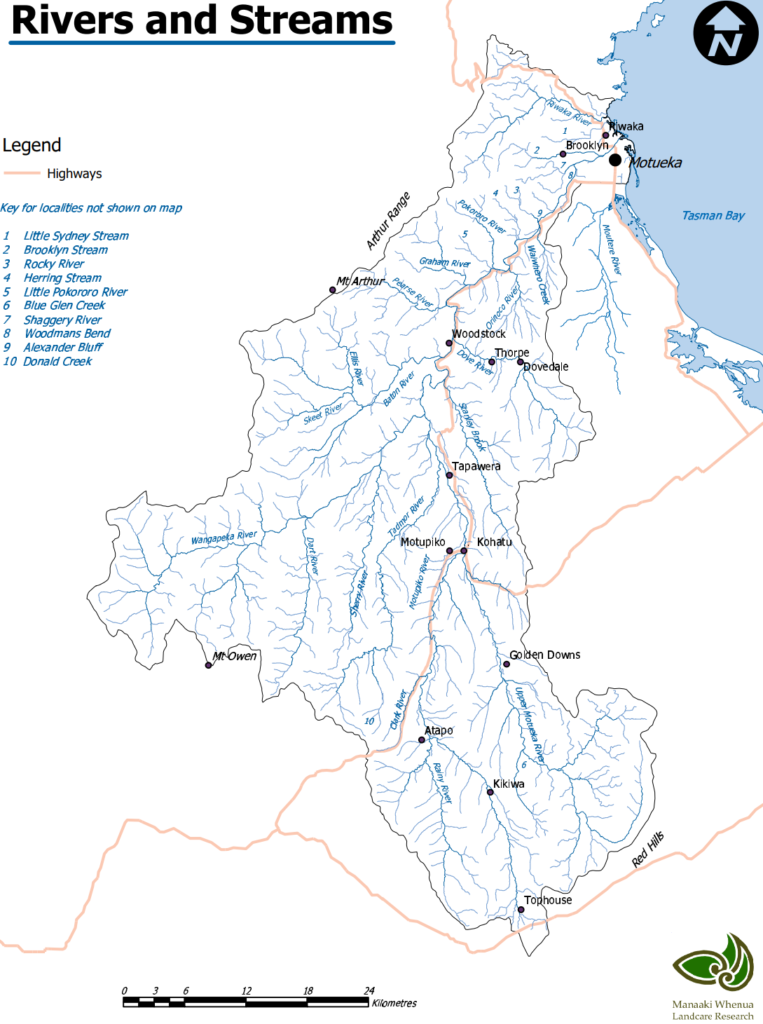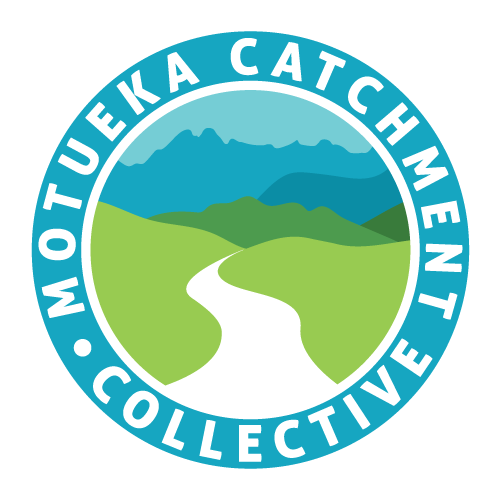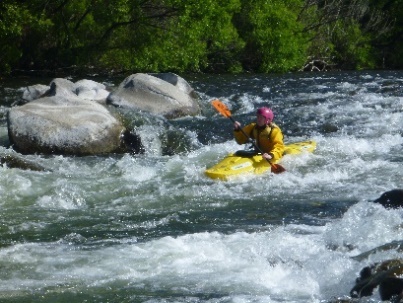Expanding local community freshwater monitoring in the Motueka catchment
The Motueka River is a taonga that is highly valued
The Motueka River and its tributaries are highly valued by the catchment community, by many people outside the catchment, and by manawhenua as expressed in this quote:
Rivers are the veins of Papatūānuku, Earth Mother, and the water in them is her lifeblood. Rivers nourish all living beings and link us with ancestors.
https://www.nrait.co.nz/our-owners/te-whanake/wai-ora-the-significance-of-our-water/
There are many reasons the Motueka River is held in high esteem, and treasured by many, including:
- It is great for swimming in, fishing from, kayaking along, walking and biking beside. By doing these things we also feel a sense of connection to it.
- It provides drinking water for the people, for horticulture, agriculture, for commercial and industrial uses.
- It holds immense cultural and spiritual value to manawhenua, including to provide māhinga kai, wāhi tapu sites, historical connection to tūpuna and ātua, water for healing and other rituals.
- It supports many freshwater species and wildlife.
Photos of courtesy of Caz Gray, TBG, and Paul Griffiths
There are risks to the health and wellbeing of the catchment and its waterways
Before 1840, the Motueka catchment contained an abundance of freshwater native wildlife, was cloaked in forest, coastal species, and wetlands were extensive. Today, only remnant patches of forest and less than 5% of wetlands remain, and biodiversity in the catchment has declined dramatically, including freshwater and bird species.
https://www.tasman.govt.nz/my-region/environment/environmental-management/water/water-management/
TDC’s state of the environment monitoring includes eight sampling sites across the whole catchment, and shows that the Motueka River and most monitored tributaries generally have good environmental condition across key indicators such as nutrients (phosphorous and nitrates) levels, water clarity, E.coli, among others. However, some of the results show a degrading trend, and for some of the many un-monitored waterways in the catchment there are signs that the picture is not so positive. Māori consider that the mauri (the lifeforce) of the Motueka awa and tributaries has been gradually depleted.
That means risks to those valued attributes of the interconnected catchment – freshwater for humans, among many other uses. Such as diversity of aquatic wildlife, fishing, swimming, beauty, cultural and spiritual connection.
Glenrae Stream Dove River over summer
We don’t know what the environmental condition of many of our waterways is
We don’t actually know the river health status of many of the waterways in the catchment is. The community has decided to start monitoring in each sub-catchment, supported by Tasman Bay Guardians (TBG) team members which is fantastic. However, at this stage this is only on a small number of waterways, that has been monitored.
With only a few sampling sites, it can be seen by the blue veins on the map below that there are many, many unmonitored waterways. This means we do not have a good picture of health across the catchment.

There is a strong case for expanding community based freshwater monitoring
For future generations to experience and enjoy these amazing freshwater veins of life that flow through the whenua, those who treasure and use the Motueka River have a responsibility to restore the mauri and wairua of the awa in the Motueka catchment.
The catchment is a large, interconnected system. What happens in one part of the catchment – on the land and waterways, flows through to other parts from mountains to the sea. A collective effort across the catchment is required!
The best way to improve quality water in the creek is to get everyone who lives along it together, identify the current condition (baseline) and come up with collective measures to maintain it if its good or fix it if its not good. This simple philosophy is at the very core of community catchment management.
https://landcare.org.nz/wp-content/uploads/2022/09/Catchment-Managment-Working-Together-booklet.pdf
Helen Forsey, TDC’s catchment facilitator , and also a member of the Freshwater monitoring group of the MCC says there is a strong case and need for expanding freshwater monitoring to more of the community:

It will help to expand our knowledge of freshwater health at sub-catchment level, including smaller rivers and streams that flow into the Motueka awa. It will also engage, train and empower community members. By raising awareness and building relationships across the community, targeted action to address water quality issues is likely to be better sustained and enhanced. Knowledge can also then be passed onto the next generation and the following one as well, empowering the community over the long term to care for their cherished awa.
Shannon Parker, Motueka Catchment Coordinator says that there are key benefits to better understanding streams, it’s water quality and/or aquatic life:
Different water quality conditions might require different actions. For instance, increasing nutrients such as nitrates and phosphates may need an enhancement in land use management, restoration, among others. An increased temperature might be linked to abundant organic material and bacterial activity, and might require strategic land use enhancements, as well as riparian planting, among others. (this can also help with bank stabilization and sediment flow risks). Knowing our streams and tributaries current health condition, will allow the community to target their actions, get their own private data for decision making and work together for the long term wellbeing of the Motueka awa.
This is why the MCC is strongly encouraging the people to put their hands up to monitor the streams in their local sub-catchment. If the community undertakes the monitoring, collective voluntary action from a place of shared goals and aspirations can come from within the neighborhood, rather than landowners being forced to make changes through regulation.
The MCC and TBG can support you and your neighbours to start freshwater monitoring!

The MCC held a freshwater monitoring meeting in Ngātīmoti on 28 November last year, and ran SHMAK training for 14 community members on 16 and 17 with expert help from Tasman Bay Guardians.
Michael Malone who attended the SHMAK training said: “I was interested in the SHMAK kit as my former work involved hydrology, river pollution monitoring, water testing and treatment. The kit appeared quite simple to use and ideal for basic stream monitoring.”
He also said “It was great to get together with similar minded people who are enthusiastic about maintaining our river environment”.
The MCC has funding and resources NOW to help the community to set up sub-catchment freshwater monitoring and that funding only goes until 2025. So now is the time!
If you or a group of you in the community with to monitor the freshwater health in your sub-catchment please get in touch and register your interest.










